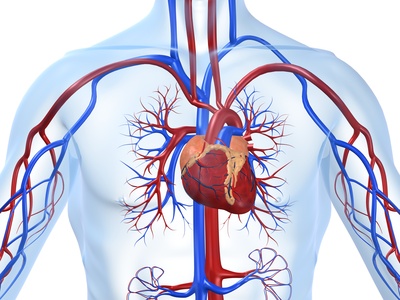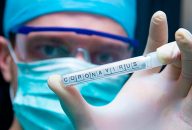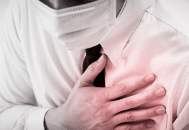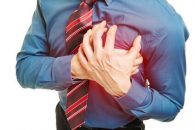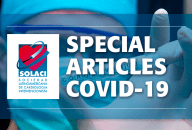Risk factors for pulmonary embolism (PE) among patients with the new coronavirus are different from those traditionally observed. A French study recently published in Eur Heart J showed those new risk factors, and also that the risk of PE is reduced by the use of anticoagulant agents, just like in patients with conventional risk factors.…
Vasculitis, Thrombosis and Angiogenesis: Covid-19´s Unique Patters
In this small, yet interesting series, we observe angiogenesis could differentiate pulmonary physiopathology by Covid-19 vs. from viral infections of similar severity (such as influenza). Being quite small, we can hardly consider it universal, or whether it could have clinical impact. Meanwhile, we keep learning about the new virus. Progressive respiratory failure is the main…
European Association of Percutaneous Cardiovascular Interventions Position Statement During the Pandemic
This document emerges from the assembly of the European Association of Percutaneous Cardiovascular Interventions (EAPCI) and the Acute Cardiovascular Care Association (ACVC). Both associations gathered their most prominent experts, including people who worked in the European areas most affected by COVID-19. Their aim was to modify diagnostic and therapeutic algorithms to adapt the evidence collected…
EuroPCR 2020 | Sudden Death Increase Two to Three Times While MI Rate Falls
The number of sudden deaths reported around the world is on the rise in Covid-19 times. These deaths are caused either by the virus and its capacity to produce lethal arrhythmias or by the fact that patients are staying away from hospitals and are not being examined. Cardiologists were the first to warn that the…
Myocardial Injury in One Third of COVID-19 Patients
Roughly one third of patients hospitalized for COVID-19 have some degree of myocardial injury and this comes hand in hand with increased mortality compared against patients with no troponin elevation. Even mild forms of myocardial injury, such as 0.03 to 0.09 ng/mL troponin elevation, is associated with close to 100% increase in mortality (HR: 1.75;…
Estimating the Risk of Infection for Healthcare Personnel
Roughly one out of every 100 healthcare workers at hospitals receiving COVID-19 patients become infected. Statistics are not uniform for all corners of earth, and they do not indicate that being on the front line necessarily entails higher risk. A large analysis conducted in the initial epicenter of the COVID-19 pandemic (Wuhan, China) showed that 110…
Priorities in the Cath Lab to Escape COVID-19 Tsunami
The pandemic tsunami of COVID-19 has hit all cath lab services, especially those performing primary PCI. Passively waiting for the first patient suspected of infection only to improvise in the early hours means heading for disaster. Several scientific societies have published recommendations, but not based on clear data. It seems pertinent to bear in mind…
Covid-19 and Unaccounted Collateral Damage
Dr Metzler and collaborators carried out a retrospective search to find out the impact of the Covid-19 pandemic on diagnosis and treatment of acute coronary syndromes during March 2020 in Austria. Basically, they tried to account for the collateral damage we all imagine, but no government reports. During March we observed a significant drop in…
Special Articles on COVID-19
Myocardial Injury for COVID-19 Even in Young Patients with Mild Symptoms Most young COVID-19 patients not requiring hospitalization showed abnormal cardiac magnetic resonance imaging (CMR) beyond two months after diagnosis. Read more HERE Infarction, Stroke and Aortic Emergency Syndromes in the Shadow of the Pandemic The coronavirus pandemic has had a negative impact on the…
Temporary Emergency Guidelines for Infarction During the Pandemic
Several United States societies (the American Heart Association [AHA] among them) have answered the question of many physicians in the front lines: what is the ideal strategy for the treatment of ST segment elevation myocardial infarction (STEMI) during the COVID-19 pandemic? This document intends to ensure that patients with STEMI continue to receive adequate, proven…
Cardiovascular Sequelae Associated with COVID-19
Myocardial injury, as defined by an increased troponin level, can occur due to both ischemic and nonischemic processes. Myocarditis would be an example of a nonischemic event. A severe, acute respiratory infection causing hypoxia, especially due to COVID-19, can cause this myocardial injury. Elevated troponin levels have been described in patients infected with COVID-19, with…
